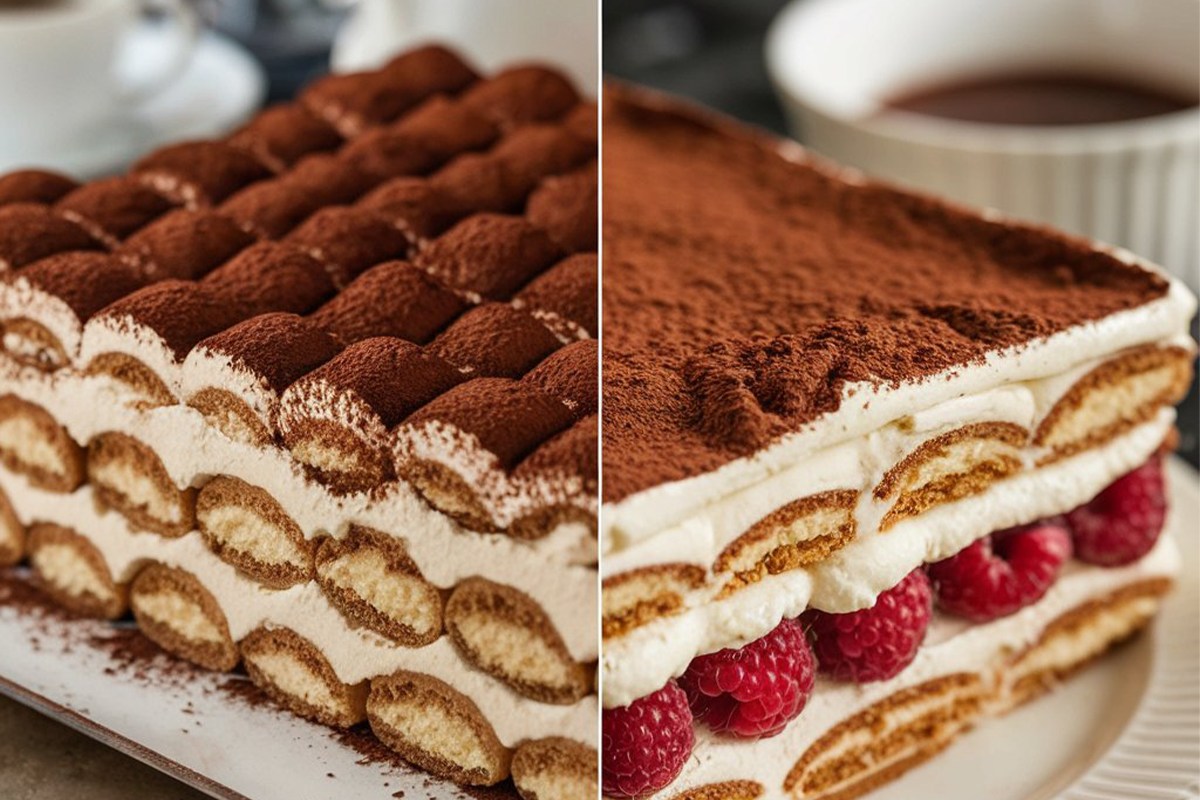Tiramisu is a beloved dessert known for its creamy layers and rich coffee flavor. Over time, tiramisu has evolved as it spread across the world. In particular, there are notable differences between Italian tiramisu and the American adaptation. But what exactly sets these two versions apart?
In this article, we’ll explain the main distinctions between Italian tiramisu and American tiramisu, from ingredients to preparation methods. Whether you prefer the traditional Italian recipe or enjoy the sweeter American version, understanding these differences will help you create the perfect dessert. For a classic recipe, check out this Tiramisu Recipe NZ to get an authentic take on the dessert.
Ingredients: Italian vs. American Tiramisu
1. Traditional Ingredients in Italian Tiramisu
In Italy, chefs use a few simple, high-quality ingredients to create tiramisu. These include mascarpone cheese, eggs, espresso, savoiardi (ladyfingers), sugar, and Marsala wine. This simplicity allows each ingredient to shine, with fresh ingredients adding richness to the flavor.
- Mascarpone Cheese: Mascarpone creates a creamy texture and adds a rich flavor to the dessert.
- Savoiardi Ladyfingers: These crisp biscuits soak up espresso perfectly, providing a soft but structured base for the layers.
- Marsala Wine: This sweet, fortified wine adds depth and authenticity to the Italian recipe, bringing a subtle kick of flavor.
If you want to learn more about how alcohol impacts tiramisu, check out this guide on the Best Alcohol for Tiramisu to enhance your dessert.
2. Ingredients in American Tiramisu
In the U.S., cooks often adapt tiramisu to suit different tastes and ingredient availability. Many recipes substitute mascarpone with cream cheese or whipped cream for a fluffier texture. Additionally, many versions omit alcohol, making the dessert more family-friendly.
- Cream Cheese: Many American recipes use cream cheese instead of mascarpone, which gives the dessert a tangy flavor and denser texture.
- Whipped Cream: Some recipes replace eggs with whipped cream, making the dessert lighter and sweeter.
- Non-Alcoholic Syrups: In place of Marsala wine, some American versions use syrups like vanilla or coffee to offer a non-alcoholic option.
Preparation Techniques: Italian vs. American Tiramisu
1. Traditional Italian Tiramisu Preparation
The preparation method for Italian tiramisu focuses on simplicity and balance. The key is to layer ingredients in a way that brings out the richness of the mascarpone and the intensity of the espresso. Traditionally, egg yolks and sugar are whisked together to form a base for the mascarpone, and the ladyfingers are briefly dipped in espresso before being layered with the cream mixture.
- Eggs: Many traditional Italian recipes use raw eggs to give the mascarpone cream its rich, velvety texture, though pasteurizing the eggs for safety is also common.
2. American Tiramisu Preparation
In American kitchens, the preparation of tiramisu often skips the use of raw eggs, opting for whipped cream or custard as a replacement for the egg-based mascarpone cream. This version is often easier for home cooks to make and doesn’t require the careful handling of raw ingredients.
- No Raw Eggs: American recipes frequently eliminate the use of raw eggs, relying on whipped cream for texture.
- Simplified Coffee Soak: Instant or brewed coffee is often used instead of the strong espresso that is a hallmark of the Italian recipe.
Cultural and Nutritional Differences
1. Italian Tiramisu: A Symbol of Heritage
In Italy, tiramisu is more than just a dessert—it’s a part of cultural heritage. Italian families often prepare tiramisu for special occasions and celebrations, staying true to the original recipe. The emphasis on fresh, high-quality ingredients is central to Italian cuisine and reflected in the lighter, more delicate version of the dessert.
2. American Tiramisu: A Sweeter, More Accessible Dessert
In the U.S., tiramisu has been adapted to suit sweeter American palates. By using more accessible ingredients like cream cheese and whipped cream, American tiramisu is often richer, denser, and higher in sugar and calories compared to its Italian counterpart.
Which Tiramisu is Better?
Choosing between Italian and American tiramisu depends largely on personal preference. For those who prefer a rich, balanced dessert that highlights quality ingredients like mascarpone and espresso, the Italian version is likely the best choice. If you enjoy a sweeter, creamier, and more indulgent dessert, the American adaptation may be more to your liking.
- Italian Tiramisu: Best for those who enjoy the authentic, rich flavors of mascarpone, espresso, and Marsala wine.
- American Tiramisu: Ideal for those who prefer a creamier, sweeter dessert with more accessible ingredients like cream cheese and whipped cream.
Frequently Asked Questions (FAQs)
1. What is the main difference between Italian and American tiramisu?
The main difference lies in the ingredients and preparation methods. Italian tiramisu uses mascarpone, raw eggs, and Marsala wine, while American tiramisu often substitutes cream cheese or whipped cream, and usually omits alcohol.
2. Can you make tiramisu without alcohol?
Yes, many American recipes omit alcohol altogether, using syrups or relying solely on the coffee flavor. For those looking for a non-alcoholic version, check out this Non-Alcoholic Tiramisu Recipe for ideas.
3. Which tiramisu is healthier?
Italian tiramisu is generally lighter because it uses mascarpone and relies less on sugar and heavy cream. American tiramisu tends to be higher in calories and sugar due to the use of cream cheese and additional sweeteners.
Conclusion: Italian vs. American Tiramisu—Which One is Right for You?
Ultimately, whether you prefer Italian tiramisu or American tiramisu depends on your taste preferences. The traditional Italian recipe offers a lighter, more balanced dessert, while the American version provides a sweeter, creamier option. For more insights into making the perfect tiramisu, you can explore our guide on What Not to Do When Making Tiramisu to avoid common mistakes and achieve the best results.
